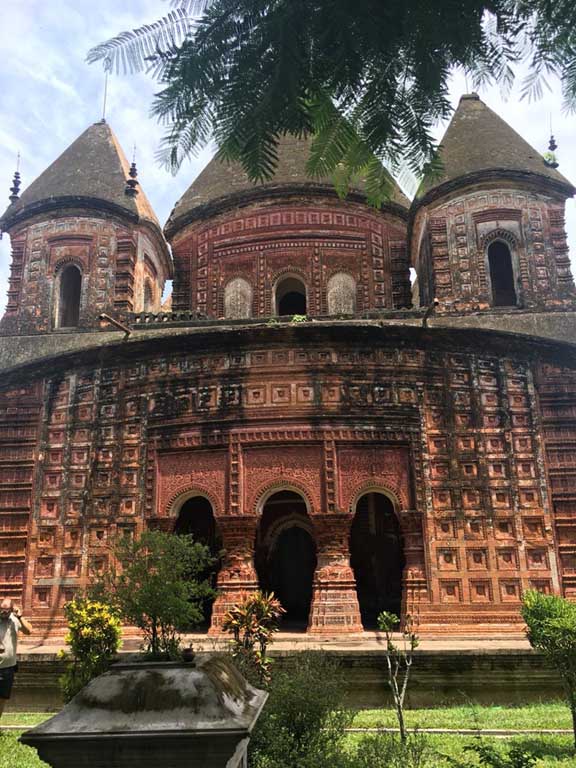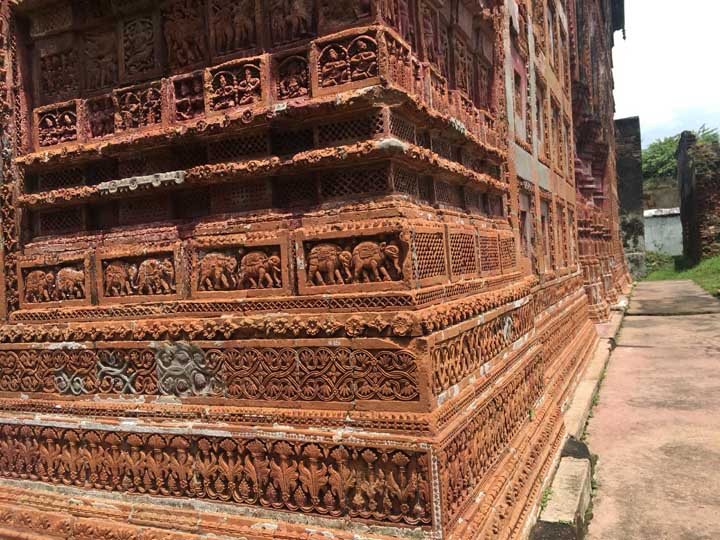Archaeological Sites Tour in Rajshahi, Bangladesh
Welcome to Rajshahi division which is one of the oldest towns in northern Bangladesh. In Rajshahi, you can find all archaeological sites of Bangladesh. You can see archaeological sites during Bogura tour. Mohastanagar is an archaeological site in Bogra town.

This was a town and district of British India which was Eastern Bengal of Assam. Sometimes people described Bogra as the nerve center of northern Bangladesh. Former president Ziaur Rahman of BNP and Muhammad Ali a former prime minister of Pakistan both were born here.
Ramparts of Mahastanagar citadel is few miles away from Bogra town. It means that this is the oldest city of Bengal in the greater emperor Asoka’s India. He conquered the Bengal and founded this old city. It was called pundra Bardhan. An ancient engraved stone that believed to be Gupata era which was discovered from the bank of a pond near Sura Masjid at Ghoraghat upozilla in Dinajpur.
Bogura / Bogra Town
Bogra town was formed in 1821. It contains an area of 3520 squire kilometer. Here major tourists attractions are Mahastanagarth, landmarks, the Nawab Bari museum, Akbori restaurant and amusement park. Bogra tour as archaeological sites adds strong cultural affinity to Baul, Marfoti, Lalon and Sufi Bengali traditional folk music.

The earliest urban archaeological site Mahastanagarth is in Bogra. The village Mahastan in Shibganj thana of Bogra that contains the remains of an ancient city as called Pundranagarh in the territory of Pundrabardhan. This place is sacred by Buddhists and Hindus alike.
Another tourist attraction is Goku Medh an excavated mound in the village of Gokul under Bogra sadar upozilla. It is about two kilometer southwest of Mahastan citadel. Excavations in 1934 to 1936 by Majumdar revealed a gigantic shrine or sputa plinth built in the terraced cellular style of construction.
Behular Basor ghor is very near to Mahastanagarth. Nawab palace used as Neelkuti. During the British period and Jaina temple were two eminent archaeological in Bogra.
Historical sites in Paharpur
Paharpur is a small village five kilometers west of Zamalgonj in the greater Rajshahi district. Here are remains of the most important and the largest famous monastery south of the Himalayas was excavation.
This seventh century archaeological covers about an area of twenty seven acres of land. The entire establishment occupying a quadrangular court that measures more than nine hundred feet externally on each side. It has high enclosure walls about sixteen feet in thickness from twelve feet to fifteen feet in high.
There are forty five cells on the north and forty four in each of other three sides. It has a total number of one hundred seventy seven rooms. South east Asia especially Myanmar and Java which profoundly influenced the archaeological sites of the pyramidal cruciform temple.
A museum built in 1956 to 1957 houses the collection of objects recovered from this area. The antiquities of the museum includes terracotta plaques, images of different gods and goddesses, potteries, coins, inscriptions, ornamental bricks and minor clay objects.
Historical tour in Mainamoti
In archaeological tour, Mainamoti is a place to show archaeological sites of Bangladesh. An isolated low, dimpled range of hills dotted with more than fifty ancient Buddhist settlements of the eight century to twelve century is as Mainamati Lalmai ranges which are extension through the center of the district Comilla.
Salvan bihar having almost the middle of the Mainamati Lalmai hill range. It consists of one hundred fifteen cells which was built around a spacious courtyard with cruciform temple. In the center, facing its only gateway complex to the north resembling that of Paharpur monastery.
Kotia mura situated on a flatted hillock about five kilometer north of Salban Vihar inside the Comilla cantonment. This area is picturesque Buddhists establishment. Here three stupas are side by side that represent the Buddhists trinity or three jewels, the Buddha, Dharma and Sangha.
Charpatra Muta is an isolated small oblong shrine at about two and half kilometer north west of Kotia Mura stupas.
Travel to know History
The only approach to the shrine is from the east through the gateway which leads to a spacious hall. The Mainamati site museum has a rich, varied collection of copper plates, gold, silver coins and eighty six bronzes objects. Over one hundred bronze statues have been recovered mostly from the monastic cells, bronze stupas, stone sculptures and hundreds of terracotta plaques.
Each measuring on an average o nine inch high and eight inch to twelve inch wide. Besides there are more archaeological sites in other places. Operated by Orient Tourism Channel
